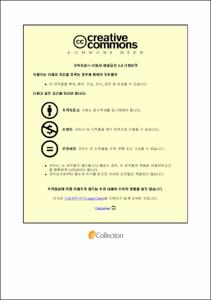Ship on the Ocean: Ambiguity surrounding the Pequod in Herman Melville's Moby-Dick; or, The Whale
- Alternative Title
- 바다 위의 배: 허먼 멜빌의 모비딕 속 피쿼드 호를 둘러싼 모호성
- Abstract
- This paper contends that the ambiguity of the Pequod on the ocean in Herman Melville’s Moby-Dick; or, The Whale is one of the strategic metaphors for the author to criticize the ideas of fixity and centrality infused by the American nationalists towards the public during the antebellum era. Emphasizing an increasing economic and industrial reputation of American sailing vessels during this era, some contemporary American intellectuals used the independent image of the ship on the ocean as a symbol of the nation’s self-reliance and its superiority to other nations. In many of literary works of the time, the ship on the ocean was depicted as something fixed and static and the grounded center in the middle of the ocean while its fluid, untraceable and unidentifiable characteristics were neglected. When it came to Moby-Dick, however, Melville discloses the hidden aspects of the ship on the ocean, specifically the Pequod on the ocean, by portraying the ambiguity of its space which is hardly defined into any fixed framings. To explore the complex space of the Pequod, this thesis adopts several notable oceanographers’ ideas of the ocean’s ambiguity and its complicated relationship with the land. Based on the theory of a seashore, I argue that the Pequod on the ocean is a perplexedly conflated space which collaborates the two disparate spatial characteristics of the land and the ocean. In addition, this thesis examines how the coexistence of the two entities affects the sailors’ thoughts of living in the Pequod. Melville divulges the illusion behind the ideas of fixity and centrality with one of the ship’s own natures: the incessant motion on the ocean. I read the Pequod’s incessant moving as a physical and figurative journey. Throughout the Pequod’s ever-lasting journey, Melville also deplores that his contemporary nation’s craving for fixing and centralizing its values among others was an unrealistic ideal.
본 연구는 『모비딕』에서 그려진 바다에 떠 있는 피쿼드 호의 모호성이 멜빌이 의도한 문학적 장치였음을 주장하고자 한다. 이를 통해 본 논문은 멜빌이 19세기 초 미국 국가주의자들이 대중들에게 주입한 고정성과 중심성을 비판하고자 했음을 말하고자 한다. 바다를 항해하는 배는 19세기 미국 경제 및 산업을 일으키는 원동력이었다. 이러한 사회배경 하에서 당대 지식인들은 강하고 자생적인 미국 국가 모습에 대한 열망을 독립적 배 이미지를 통해 표출하였다. 당시 다수의 문학 작품에서 바다 위의 배는 마치 바다에 단단한 뿌리를 내린 고정적이고 굳건한 중심점으로 묘사되었다. 이로 인해 바다 위의 배가 가진 유연하고, 추적이 힘든, 명확히 정의 내려 지지 않는 이미지들은 외면되었다. 하지만 멜빌은 바다를 항해하는 피쿼드 호를 통해 당대 국가주의를 지지하던 다수의 문학작가들이 그려내지 않았던 배의 다양한 이미지들을 보여준다. 피쿼드 호의 다양한 모습은 바다 위에 떠있는 배라는 공간이 고정적 틀로 쉽게 정의 내려 지지 않는 모호한 공간임을 보여준다. 배의 모호성의 원인을 규명하기 위해 본 논문은 바다의 모호한 공간성과 바다와 육지 간의 관계를 연구한 기존의 해양학의 이론 중 해변이론을 참고한다. 이를 통해 바다 위의 배는 육지와 바다의 이질적인 공간적 특징들이 복잡하게 융합된 공간임을 주장하고자 한다. 또한 바다와 육지의 특징들이 공존하는 배라는 공간이 그 속에서 삶을 살아가는 선원들의 사고에 어떠한 영향을 미치는지를 분석한다. 멜빌은 배의 근본적 성질 중 하나인 끊임없는 움직임을 통해 고정성과 중심성 뒤에 숨겨진 환상을 파헤친다. 바다 위에서 끊임없이 움직이는 피쿼드 호는 배가 물리적 그리고 비유적으로 지속적 항해 중에 있음을 의미한다. 끊임없이 이어지는 피쿼드 호의 여정을 통해 멜빌은 미국만의 가치를 규명하고 정의 내리려 한 당시 미국사회의 비현실적 이상의 문제점을 고발한다.
- Issued Date
- 2020
- Awarded Date
- 2020. 2
- Type
- Dissertation
- Publisher
- 부경대학교
- Affiliation
- 부경대학교 대학원
- Department
- 대학원 영어영문학과
- Advisor
- 박준형
- Table Of Contents
- 1. Introduction 1
2. Ship on the Ocean: A Symbol of Complexity 9
2.1. Ship on the Ocean from the Oceanic Views 11
2.2. Ship on the Ocean in Nineteenth-century America 17
3. The Pequod on the Ocean: A Medium for the Worlds Intermingled with Each Other 22
3.1 The Ambiguity of the Pequod on the Ocean: A Space with Incessant Interaction 24
3.2. Ahab’s Fantasy of the Pequod at the Ocean: Reflection of the Ideals in Nineteenth-century America 28
4. The Ship in Motion: Journey in the Ocean of Ambiguity 35
5. Conclusion 41
Work Cited 47
- Degree
- Master
- Files in This Item:
-
-
Download
 Ship on the Ocean: Ambiguity surrounding the Pequod in Herman Melville's Moby-Dick; or, The Whale.pdf
기타 데이터 / 410.6 kB / Adobe PDF
Ship on the Ocean: Ambiguity surrounding the Pequod in Herman Melville's Moby-Dick; or, The Whale.pdf
기타 데이터 / 410.6 kB / Adobe PDF
-
Items in Repository are protected by copyright, with all rights reserved, unless otherwise indicated.